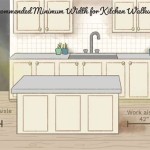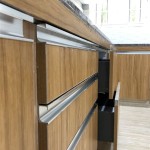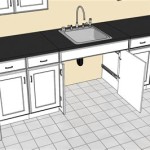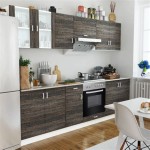French Inspired Kitchen Cabinets: A Timeless Elegance
French-inspired kitchen cabinets evoke a sense of timeless elegance, sophistication, and warmth. They represent a design philosophy rooted in historical precedent, embracing ornate details, natural materials, and a calming color palette. These kitchens are not merely functional spaces; they are statements of style, reflecting a cultivated taste and appreciation for enduring beauty. Understanding the key elements that define this aesthetic is crucial for homeowners seeking to replicate the charm and character of French design in their own homes.
The appeal of French-inspired kitchen cabinets stems from their layered approach to design. They are characterized by a blend of formal and informal elements, creating a look that is both elegant and inviting. This is achieved through the careful selection of materials, the incorporation of intricate details, and the strategic use of color and texture. The goal is to create a space that feels both luxurious and comfortable, a place where culinary endeavors are enhanced by the beauty of the surroundings. The aesthetic often draws inspiration from various French historical periods, ranging from the opulent styles of the Baroque and Rococo eras to the more restrained elegance of the Louis XVI and Directoire periods. Regardless of the specific influence, French-inspired kitchens consistently prioritize sophistication and refinement.
Key Elements of French-Inspired Kitchen Cabinets
Several key elements contribute to the distinctive look of French-inspired kitchen cabinets. These include the materials used, the style of the doors and drawers, the hardware selections, and the finishing techniques employed. A thorough understanding of these elements is essential for achieving an authentic and cohesive French aesthetic.
Material Selection: Solid wood is the foundation of most French-inspired kitchen cabinets. Traditionally, hardwoods like cherry, maple, and walnut are favored for their durability, rich grain patterns, and ability to accept intricate carvings and moldings. The choice of wood often depends on the desired level of formality. Cherry and walnut, with their darker tones and pronounced grain, tend to lend themselves to more formal settings, while maple, with its lighter color and finer grain, can be used to create a more relaxed and rustic feel. Beyond solid wood, some designs incorporate wood veneers over engineered wood substrates to enhance stability and reduce the risk of warping, especially in environments with fluctuating humidity levels. The use of natural materials extends beyond the cabinetry itself. Countertops are frequently made of marble, granite, or limestone, further contributing to the organic and luxurious ambiance. These materials not only enhance the visual appeal of the kitchen but also provide durable and functional surfaces for food preparation.
Door and Drawer Styles: The style of the cabinet doors and drawers is a defining characteristic of French-inspired kitchens. Raised panel doors, with their central panel recessed within a molded frame, are a common choice, lending depth and dimension to the cabinetry. The detailing of the raised panel can vary from simple and understated to elaborate and ornate, depending on the desired level of formality. Another popular option is the Shaker-style door, which features a flat central panel and a simple, clean frame. While traditionally associated with American design, Shaker-style doors can be adapted to a French aesthetic through the use of specific finishes and hardware. In addition to the panel design, the shape of the door itself can contribute to the overall look. Arched doors, with their gracefully curved tops, add a touch of elegance and sophistication, while square doors offer a more streamlined and contemporary feel. Drawer fronts often mirror the design of the cabinet doors, maintaining visual consistency throughout the kitchen. However, some designs incorporate different drawer styles to add visual interest. For example, a bank of drawers might feature a combination of raised panel and flat panel fronts, creating a subtle contrast in texture and design.
Hardware Choices: The hardware selections for French-inspired kitchen cabinets are critical for completing the look. Ornate knobs and pulls, often crafted from antique brass, bronze, or pewter, are frequently used to complement the intricate detailing of the cabinetry. These hardware pieces often feature decorative elements such as floral motifs, scrollwork, or beaded accents, adding a touch of refinement and elegance. The finish of the hardware is also important. Antique finishes, with their subtle patina and aged appearance, are particularly well-suited to French-inspired kitchens, enhancing the sense of history and authenticity. In addition to knobs and pulls, other hardware elements, such as hinges and latches, can also contribute to the overall aesthetic. Exposed hinges, with their decorative details and antique finishes, can add a touch of visual interest, while concealed hinges offer a more streamlined and modern look. The selection of hardware should be carefully considered to ensure that it complements the overall design of the kitchen and enhances the sense of timeless elegance.
Color Palettes and Finishing Techniques
The color palette and finishing techniques employed in French-inspired kitchen cabinets play a crucial role in establishing the overall mood and character of the space. Soft, muted colors are often favored, creating a calming and inviting atmosphere. Distressing and glazing techniques are commonly used to enhance the sense of age and authenticity.
Color Selections: Pastel shades, such as cream, ivory, pale blue, and soft green, are frequently used to create a light and airy feel. These colors evoke a sense of tranquility and sophistication, contributing to the overall elegance of the kitchen. White is also a popular choice, providing a clean and classic backdrop for the intricate details of the cabinetry. However, white can sometimes feel too stark or modern, so it is often softened with subtle undertones of cream or gray. In addition to these lighter colors, some French-inspired kitchens incorporate darker accents, such as deep blues, greens, or grays, to add depth and visual interest. These darker colors are often used on islands, range hoods, or accent cabinets, creating a focal point within the space. The color palette should be carefully considered to ensure that it is cohesive and harmonious, reflecting the desired level of formality and sophistication.
Finishing Techniques: Various finishing techniques are employed to enhance the beauty and character of French-inspired kitchen cabinets. Distressing is a common technique used to create a worn and aged appearance, adding to the sense of history and authenticity. This technique involves intentionally creating imperfections in the finish, such as scratches, dents, and worn edges. Glazing is another popular technique, involving the application of a thin layer of translucent color over the base coat of paint. This glaze settles into the crevices and corners of the cabinetry, highlighting the details and adding depth and dimension. Antiquing is a similar technique that involves the application of a dark glaze or stain to create a aged and weathered look. In addition to these techniques, some French-inspired kitchens incorporate decorative painting, such as hand-painted murals or stenciled designs, to add a unique and artistic touch. The finishing techniques should be carefully applied to complement the overall design of the kitchen and enhance the sense of timeless elegance.
Incorporating French Design Elements Beyond Cabinets
While the cabinets form the foundation of a French-inspired kitchen, the overall aesthetic is further enhanced by incorporating other complementary design elements. These include countertop materials, backsplash designs, flooring choices, lighting fixtures, and decorative accessories.
Countertops and Backsplashes: Countertop materials typically include marble, granite, or limestone, reflecting the natural and luxurious aesthetic. Marble, with its distinctive veining and cool, smooth surface, is a classic choice for French-inspired kitchens. Granite, with its durability and wide range of colors and patterns, is a more practical option for high-use areas. Limestone, with its soft, muted tones and textured surface, adds a touch of rustic charm. Backsplashes often feature intricate tile designs, such as subway tiles, mosaic patterns, or hand-painted murals. Subway tiles, with their clean, simple lines, provide a classic and timeless look. Mosaic patterns, with their intricate details and vibrant colors, add a touch of visual interest. Hand-painted murals, with their unique and artistic designs, create a focal point within the kitchen. The countertop and backsplash should be carefully selected to complement the cabinetry and enhance the overall design of the kitchen.
Flooring and Lighting: Flooring choices often include hardwood, tile, or stone, reflecting the natural and durable aesthetic. Hardwood, with its warm tones and natural grain, provides a classic and elegant look. Tile, with its durability and wide range of colors and patterns, is a practical option for high-traffic areas. Stone, with its natural texture and timeless appeal, adds a touch of rustic charm. Lighting fixtures typically include chandeliers, pendant lights, and sconces, providing both ambient and task lighting. Chandeliers, with their elegant designs and sparkling crystals, add a touch of glamour. Pendant lights, with their focused light and stylish designs, provide task lighting for cooking and food preparation. Sconces, with their soft, indirect light, create a warm and inviting atmosphere. The flooring and lighting should be carefully selected to complement the cabinetry and enhance the overall design of the kitchen.
Decorative Accessories: Decorative accessories, such as antique mirrors, vintage dishware, and floral arrangements, add personality and charm to a French-inspired kitchen. Antique mirrors, with their ornate frames and aged glass, add a touch of elegance and sophistication. Vintage dishware, with its unique designs and historical significance, adds a touch of personality. Floral arrangements, with their vibrant colors and natural beauty, create a warm and inviting atmosphere. Other decorative accessories might include copper pots and pans, woven baskets, and vintage linens. The decorative accessories should be carefully selected to complement the overall design of the kitchen and reflect the homeowner's personal style.

20 Ways To Create A French Country Kitchen

He Loves The Phony French Country Kitchens Laurel Home

25 Gorgeous French Country Kitchens

He Loves The Phony French Country Kitchens Laurel Home

Get The Look French Country Kitchens Redefined

French Country Kitchen Cabinet Designs That Cost Less

How To Design A Modern French Country Kitchen Edward George

French Country Kitchen Cabinets Designs By Ken Kelly

75 French Country Kitchen Ideas You Ll Love June 2025 Houzz

He Loves The Phony French Country Kitchens Laurel Home
Related Posts








